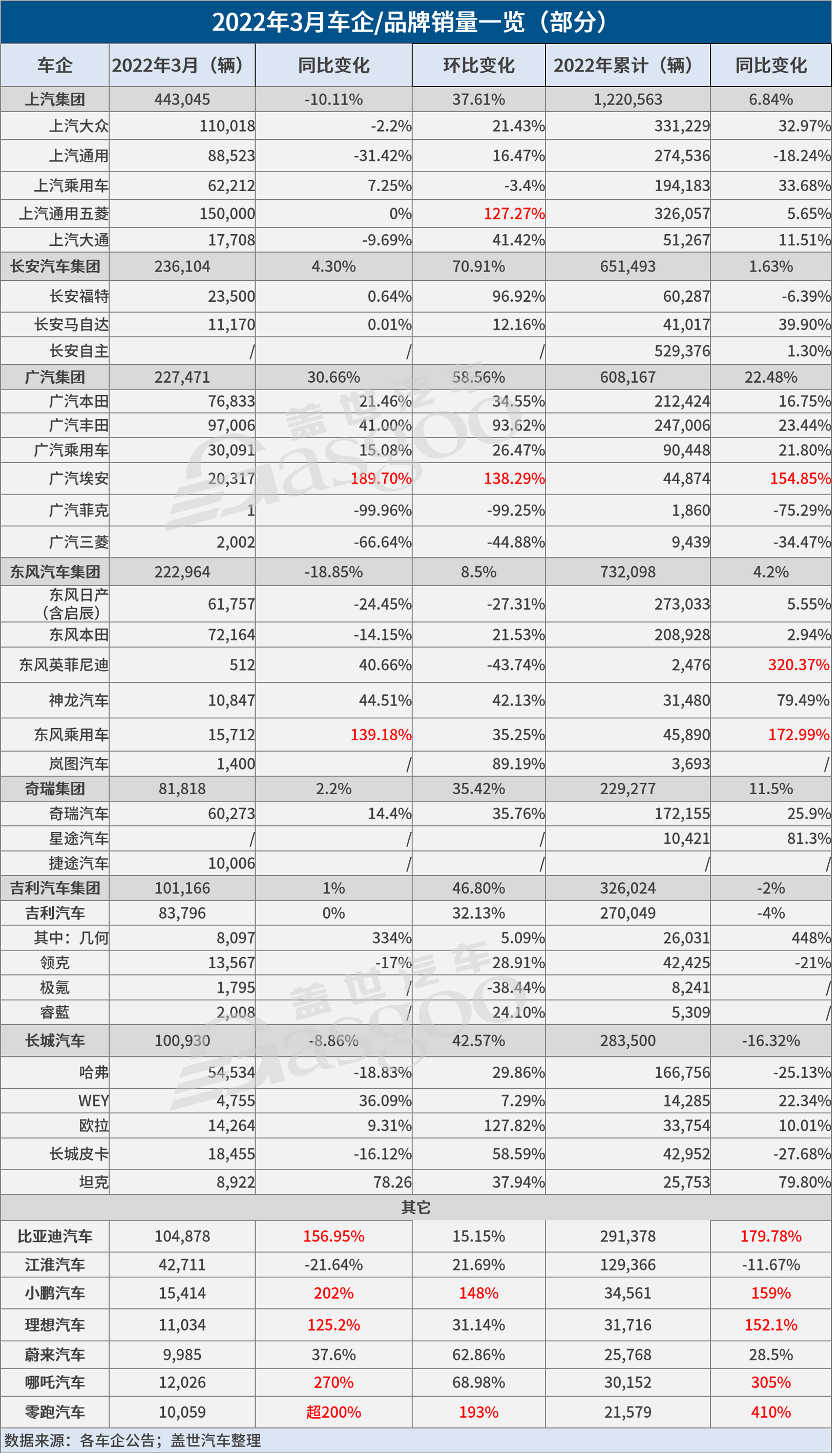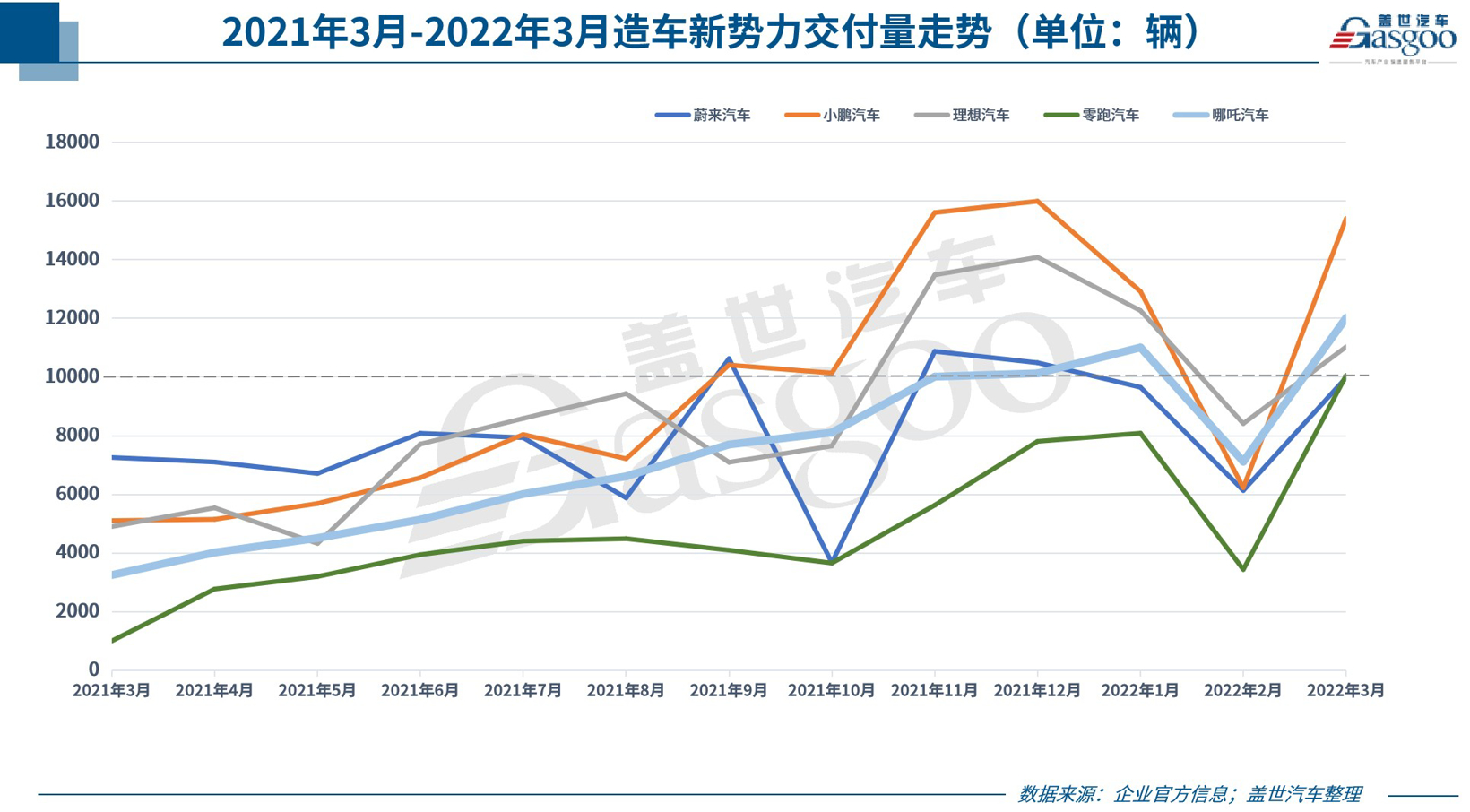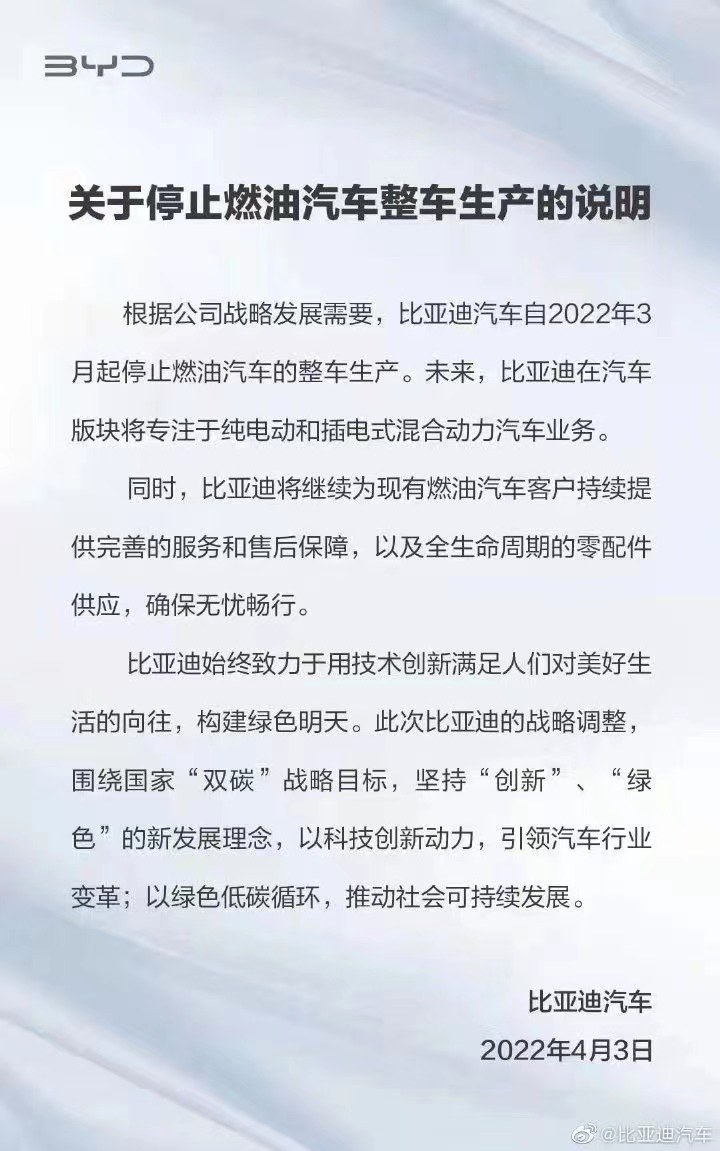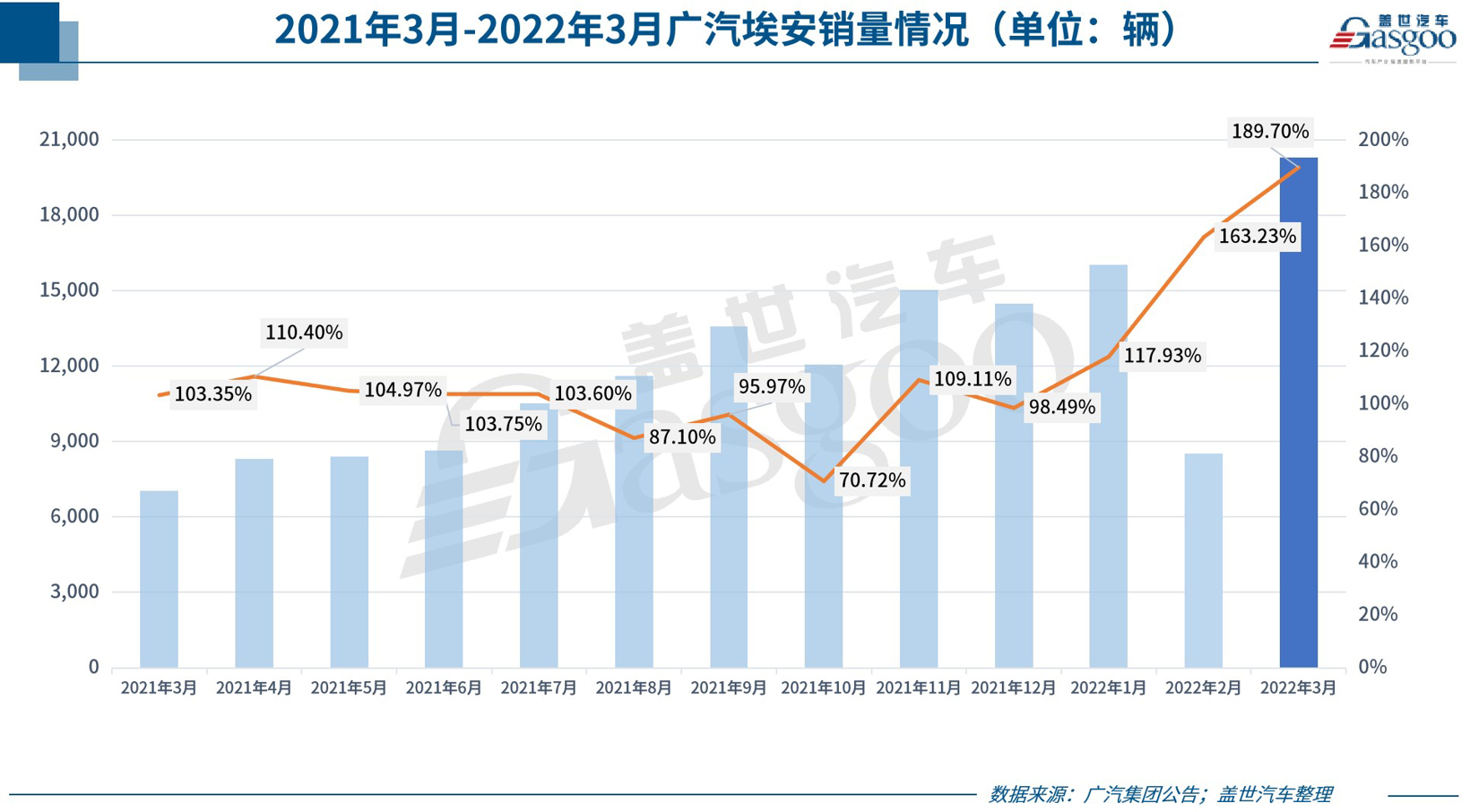






Recently, a number of car companies / brands have announced March car sales one after another. Judging from the data collected by Global Automobile, the vast majority of car companies rose month-on-month, but affected by factors such as the spread of the epidemic, many car companies failed to perform as expected year on year.

The performance of car companies varies, and the achievements of BYD and Guangzhou Automobile are outstanding.
According to the China Automobile Association, car sales in China reached 2.234 million in March, up 28.4% from the previous month, but down 11.7% from a year earlier. Specific to the level of car companies, it seems that "some people are happy and others are sad".
In terms of month-on-month comparison, among the 31 car companies counted by Gaishi, with the exception of a few car companies, such as Dongfeng Infiniti, Guangzhou Automobile Fick, Guangzhou Automobile Mitsubishi and so on, their sales in March were less than those in February, while the rest showed month-on-month growth. Of course, it is worth noting that under the overall growth rate of 28.4%, some car companies have only increased slightly, while others have skyrocketed. As can be seen from the above table, four car companies have increased by more than 100% month-on-month, with the highest growth rate of 193%.
In terms of year-on-year, the performance of car companies is also inconsistent. Under the overall decline of 11.7%, not all car companies failed to exceed the level of the same period last year. In fact, some car companies still get relatively good results. For example, seven car companies, such as Nashi car, zero-running car and BYD, grew by more than 100% year-on-year, with the highest even reaching 270%.
On the whole, the growth of new power car companies in March is still quite outstanding. Although after a period of ultra-rapid growth, the sales growth rate of the new power car companies has now relatively slowed down, it is still at a good level. From the perspective of the five brands in this statistics, 3 brands have a year-on-year growth rate of more than 200%, and the month-on-month growth rate is also relatively high.

Specifically, the delivery volume of Xiaopeng car in March rebounded sharply from the previous month to 15414, an increase of 202% over the same period last year and 148% over the same period last year; the delivery volume of Naha car in March reached 12026, an increase of 270% over the same period last year, and an increase of nearly 70% over the previous month; the delivery volume of ideal cars in March was 11034, an increase of 125.2% over the same period last year. Month-on-month growth of 31%; zero-running cars exceeded 10,000 is the biggest focus of new power delivery in March, its delivery volume reached 10059 in March, an increase of more than 200% over the same period last year, and an increase of 193% over the previous month. Although it has not exceeded 10,000, it has increased by 37.6% compared with the same period last year, an increase of 62.9%.
For the good sales performance of the new power car companies, analysts at the Global Automotive Research Institute said that this is mainly due to their strong product competitiveness and high acceptance in market segments, as well as their low sales base and large room for growth.
BYD's performance is also very eye-catching. BYD sold 104878 new cars in March, up 156.95 per cent from a year earlier. It is worth noting that while announcing the sales, BYD announced that it would stop fuel vehicle production from March this year and focus on the EV pure electric and DM plug-in hybrid car business. According to production and sales figures released by BYD, its fuel vehicle sales were completely suspended in March. In view of this, BYD became the first brand in China to sell "100000 +" new energy passenger cars.

BYD stops production of fuel vehicles; photo source: BYD
Behind this performance, BYD's whole industry chain layout and technology vertical integration, but also proved to a certain extent BYD EV pure electric, DM mixed "two legs" walking strategy is correct. With the help of leading technologies such as blade battery, DM-i super hybrid and e-platform 3.0, BYD EV and DM models sold 53664 and 50674 vehicles respectively in March. This is quite different from the situation that other domestic manufacturers emphasize pure electricity, light mixing or even no mixing.
In addition, from the perspective of several major domestic automobile groups, GAC GROUP's sales performance in March was relatively excellent. GAC GROUP sold a total of 227471 new cars in March, up 30.66% from the same period last year and 58.56% higher than the previous month. In the first three months of this year, GAC GROUP sold a total of 608167 vehicles, an increase of 22.48 per cent over the same period last year.
From the perspective of its brands, the two joint venture brands of Guangzhou Automobile Honda and Guangzhou Automobile Toyota are still the main force of its sales. Judging from the sales volume of the past year, although affected by factors such as chip supply shortage, the sales of the two brands have fluctuated to a certain extent, but the overall trend has been on the rise. Guangzhou Auto Honda sold 76833 vehicles in March, up 21.46 per cent from a year earlier, according to data. Guangzhou Auto Toyota sold 97006 new cars in March, up 41 per cent from a year earlier.
As far as GAC GROUP is concerned, the contribution of GAC Ean is gradually increasing. After a brief decline in February, GAC's Ian sales rebounded sharply in March, breaking 20, 000 vehicles for the first time, reaching 20317, a year-on-year increase of 189.7% and a month-on-month increase of 138.3%. Of these, AION Y alone delivered 9501 vehicles in March, a month-on-month increase of 218%.

The sales performance of GAC-Mitsubishi and GAC Fick is in sharp contrast to the above brands, especially GAC Fick. Figures show that Guangzhou Auto Fick Jeep sold only one car in the month, down 99.96 per cent from 2523 in the same period last year. Although according to the official response, this performance is mainly affected by the transformation of its factory production line, chip shortage, longer shipping cycle of imported parts and other factors. But that doesn't seem to explain the decline that has been going on for so long.
It is worth noting that GAC Fick also reported the news of stock ratio adjustment before. However, according to the announcement issued by GAC GROUP in late January this year, the two sides have not yet signed a formal agreement on equity adjustment of Guangzhou Auto Fick. But even so, in the eyes of industry insiders, according to the current development trend, GAC Fick's stock ratio adjustment is only a matter of time.
The new energy plate is growing against the trend, and there are certain variables in the subsequent performance.
Sales of new energy vehicles reached 484000 in March, a year-on-year increase of 1.1 times, according to the China Automobile Association. Thus it can be seen that under the situation of the decline in overall car sales compared with the same period last year, new energy vehicles still continue the momentum of rapid growth. In fact, both the surge of the new power of car building mentioned above and the excellent performance of BYD all prove this point. In addition, the sales performance of some traditional car companies also confirms the popularity of the new energy market.
For example, SAIC's overall sales fell 10% in March compared with the same period last year, but its new energy vehicle sales rose 19.61% year-on-year. Not only that, according to the latest data, Hongguang MINIEV GAMEBOY blind orders have exceeded 30, 000 units. JAC's sales fell more than 20% in March from a year earlier, but its all-electric passenger car sales surged 55% from a year earlier. GAC GROUP's overall sales rose 30.66% from a year earlier, but its new energy vehicle sales surged 165% in March, far higher than its overall sales growth.
You know, in March, the market environment was "not friendly".
In that month, affected by the epidemic, a number of prefecture-level cities adopted epidemic control measures in the whole region or key areas, disrupting the market rhythm of car companies and dealers. According to a survey conducted by the China Automobile Circulation Association, dealers in 25 of the 90 cities have suspended business for several days because of epidemic prevention and control.
Not only that, the new energy vehicle market recently staged a new round of price increases. According to incomplete statistics, since the beginning of this year, more than 20 car companies have raised the prices of their nearly 50 models, and in the near future, more and more car companies are involved, and the price increase is also increasing.
Combined with March sales, whether it is the epidemic or rising prices, the impact on the new energy vehicle sector does not seem to be obvious. From the perspective of the impact of the epidemic, according to the analysis of the Federation of passengers, although the new energy vehicle market was also affected by the epidemic in March, the control measures at that time were relatively mild and the impact was not obvious.
The Federation believes that there are four main reasons why the impact of the price rise of new energy vehicles is not obvious:
First, the sales model of new energy vehicles is order sales. At present, various car companies have more orders before the price increase, resulting in the basic digestion of pre-orders from March to April, so the sales volume has little impact.
Second, the diversion of new energy to the fuel vehicle market, and the high oil price leads to the advantage of new energy. Now that the oil price is high, the performance-to-price ratio of new energy vehicles has been significantly improved, but the traditional car market is even more difficult.
Third, the rigid demand of consumers of new energy vehicles is strong, and the price sensitivity is relatively low, so small price changes will not significantly affect consumers' demand for new energy vehicles.
Fourth, the order price before the price increase of new energy vehicles is locked, resulting in the result that the locked price of early booking is cheap, which leads to a new situation in which more consumers are rational or follow the trend.
Cui Dongshu, secretary-general of the Federation of passengers, said frankly that the lock-in of orders before the price increase has formed a trend-following effect, and the phenomenon of buying up or down is more obvious.
From this point of view, in March, the price rise and the epidemic failed to stop the strong growth momentum of new energy vehicles, so how will the situation change in the future?
There is a view that the situation after that is not optimistic, on the one hand, it is due to the rush to book and overdraw the follow-up part of sales before the price rise of new energy vehicles. However, analysts at the Global Automotive Research Institute said that there will be no overdraft and will continue to maintain rapid growth. "this year will be the last year for new energy vehicle subsidies, and in some areas such as Shanghai, there will be no new energy vehicle license plate starting from 2023, superimposed by the impact of high oil prices, there will still be users purchasing new energy models."
If the impact of price increases is still difficult to determine, then the impact of the epidemic is inevitable. Now the epidemic is still fermenting, in this process, new energy vehicles may be difficult to stay out of it.
As a matter of fact, many car companies have been affected. Since March, the company's supply chain partners in Jilin, Shanghai, Jiangsu and other places have stopped production one after another and have not yet recovered, the company said recently. Affected by this, the production of the whole vehicle of Weilai has been suspended. Due to the above reasons, the delivery of many users' vehicles will be delayed in the near future.

Weilai said the production of the whole vehicle had been suspended; photo source: App screenshot of Lulai
Not only Wei Lai, Tesla and other car companies have also been affected. It is reported that after a two-day shutdown on March 16 and 17, Tesla again announced the suspension of production in the Shanghai super factory on March 28, which had been suspended for 19 days as of April 13. According to relevant estimates, Tesla's domestic factory has a daily production capacity of about 2285 vehicles, which means that Tesla stopped production for 19 days and affected production of more than 40, 000 vehicles. It is also understood that due to the impact of the epidemic, Tesla's delivery cycle has also been extended by about 4 weeks.
In addition, it is worth noting that from the consumption level, some potential consumers have a large loss of work income and a decline in car purchasing ability in the epidemic, which will also bring some uncertainty to the growth of overall car sales, including new energy vehicles.
For queries, please contact Lemon Zhao at lemonzhao@smm.cn
For more information on how to access our research reports, please email service.en@smm.cn